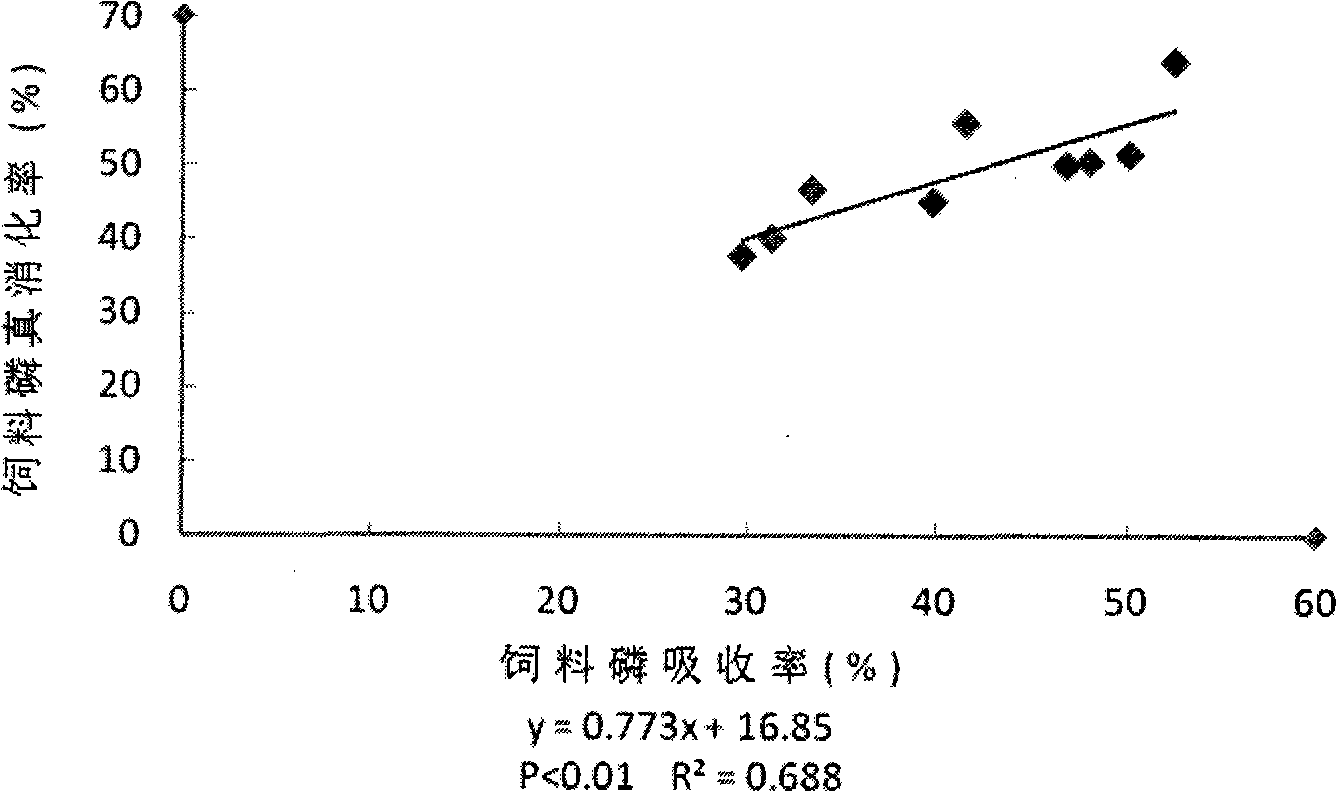Method for measuring effective phosphorus in feedstuff
A method for measuring available phosphorus, which is applied in the field of determining the biological value of phosphorus in feed, can solve the problems that the absorption of phosphorus in feed cannot be reflected, and the evaluation of the biological value of phosphorus in feed has not been carried out by the eversion intestinal sac method.
- Summary
- Abstract
- Description
- Claims
- Application Information
AI Technical Summary
Problems solved by technology
Method used
Image
Examples
Embodiment 1
[0025] Embodiment 1, determination of eversion intestinal sac culture time
[0026] Five treatment groups were set up with incubation times of 20, 30, 40, 50, and 60 min, respectively. A total of 30 intestinal sacs from 5 pigs were randomly assigned to 5 treatment groups with 6 intestinal sacs in each treatment group, and each intestinal sac was used as a replicate of everted intestinal sacs. Weigh 30 samples, each sample 1g, put them into 20mL glass test tubes, add 4mL pepsin solution (containing 750U / mL+0.18mol / LHCl), oscillate and shake well, seal with palafilm glue, and store at 39°C Incubate at constant temperature in a water bath for 75 min. Mix the pepsin-digested chyme with 1 mL of trypsin solution (concentration is 2.4 mg / mL, equivalent to 2.4 mg / g in the diet sample), seal it with palafilm glue, and continue to store it at 39 ° C. Incubate at constant temperature in a water bath for 270 min. Put the everted intestinal sac into a test tube (digested diet), add 5 mL...
Embodiment 2
[0028] Example 2. Evaluating the In vitro Absorption Rate of Phosphorus in Four Kinds of Diets by the Eversioned Gut Sac Method
[0029] The four diets were wheat-type diet without phytase, wheat-type diet with phytase, brown rice-type diet without phytase, and brown rice-type diet with phytase. A total of 24 The sacs were randomly assigned to 4 treatment groups, 6 sacs per treatment group, and each sac served as a replicate of everted sacs. Weigh 6 samples of each diet, 1g of each sample, put them into 20mL glass test tubes, add 4mL of pepsin solution (containing 750U / mL+0.18mol / LHCl), oscillate and shake well, seal with palafilm glue, Incubate at a constant temperature in a water bath at 39°C for 75min. Mix the pepsin-digested chyme with 1 mL of trypsin solution (concentration is 2.4 mg / mL, equivalent to 2.4 mg / g in the diet sample), seal it with palafilm glue, and continue to store it at 39 ° C. Incubate at constant temperature in a water bath for 270 min. Put the everte...
Embodiment 3
[0031] Example 3, Evaluation of 9 kinds of vegetable feed phosphorus in vitro absorption rate by eversion intestinal sac method
[0032] Nine kinds of vegetable feeds were corn, soybean meal, subflour, wheat bran, wheat, brown rice, cotton meal, rapeseed meal, and rice bran. A total of 54 intestinal sacs from 9 pigs were randomly assigned to 9 treatment groups, and each treatment group 6 sacs, each as a repeat of the everted sac. Weigh 6 samples of each diet, 1g of each sample, put them into 20mL glass test tubes, add 4mL of pepsin solution (containing 750U / mL+0.18mol / LHCl), oscillate and shake well, seal with palafilm glue, Incubate at a constant temperature in a water bath at 39°C for 75min. Mix the pepsin-digested chyme with 1 mL of trypsin solution (concentration is 2.4 mg / mL, equivalent to 2.4 mg / g in the diet sample), seal it with palafilm glue, and continue to store it at 39 ° C. Incubate at constant temperature in a water bath for 270 min. Put the everted intestinal...
PUM
 Login to View More
Login to View More Abstract
Description
Claims
Application Information
 Login to View More
Login to View More - R&D
- Intellectual Property
- Life Sciences
- Materials
- Tech Scout
- Unparalleled Data Quality
- Higher Quality Content
- 60% Fewer Hallucinations
Browse by: Latest US Patents, China's latest patents, Technical Efficacy Thesaurus, Application Domain, Technology Topic, Popular Technical Reports.
© 2025 PatSnap. All rights reserved.Legal|Privacy policy|Modern Slavery Act Transparency Statement|Sitemap|About US| Contact US: help@patsnap.com



